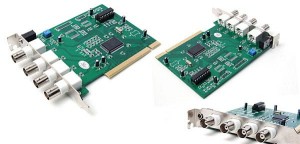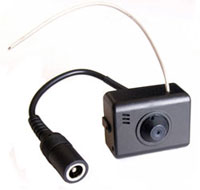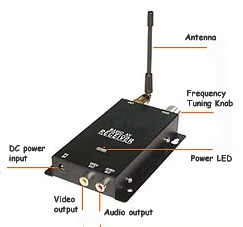Setting up a Wireless webcam is not as difficult as you might think.
Basically all you need to think about is
- What do you need to record the image
- How do you get that image into the PC
- What do you need to do to show that image on the web
Firstly I went on to a well know auction site ( EBAY lol ) and bought a PCI capture card.
You will find a lot of these cards come with Windows software, but a component of Linux is V4L ( video for linux ) and luckily these cards use a connexant BTTV chip with is well supported under linux.
To enable this card all you have to do is add the following lines to your modprobe.conf file
alias char-major-81 videodev alias char-major-81-0 bttv options bttv card=77 tuner=-1 radio=0 triton1=0 vsfx=0 autoload=0
This will give you 4 different inputs you can use , so you could have 4 cameras connected up and displayed on your web page.
Next I bought the wireless camera kit.
You can find really cheap kits, but to be legal in the UK you need to buy a 2.4ghz one . By fitting the camera into a small case I could easily have it anywhere in my garden. ( The only downfall with the wireless camera is that with a normal cheap PP3 battery you only get around 2 hours of life )
A rough formula on how long your camera will stay alive for is
Estimated total battery life = (Ib / Id) x 0.7
Where:
Ib = Total Capacity Rating of battery (mAh)
Id = Current Consumption of the device in milliamps (mA)
Note: Use of this formula does not guarantee that you will get the determined battery life. Other factors such as weather condition (temperature, humidity, etc.), and battery condition can extend/shorten the battery life.
So I have looked at putting a PP9 battery on instead, also I want to be able to stop the camera from working at night. So to combat this I have been looking into fitting a small light sensor between the battery and the camera.
The circuit for this can be found Dark/Light Activated Relay Circuit
In order to capture the camera pictures I used an application called fswebcam.
Then I had a shell script run every 5 minutes to capture the picture
/usr/local/bin/fswebcam -q \ -d /dev/video0 -i 0 \ --banner-colour "#44000000" --line-colour "#FF000000" \ --title "GadgetDude" --subtitle "Garden Cam" \ /w3/cam1.jpg
This basically captures the image from camera input 0, labels it and puts it in my web area.




